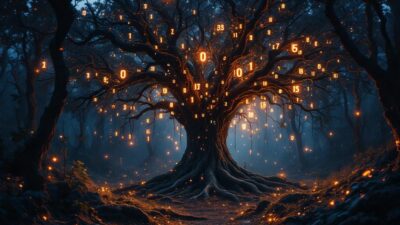The Side Effect Club: Google’s Nested Learning Helps AI Remember Past Knowledge “`html
Google’s “Nested Learning”: A Revolutionary Leap in Continual Learning
Estimated Reading Time: 5 minutes
- “Google’s Nested Learning – A quiet revolutionary approach set to transform continual learning in Machine Learning models.”
- “When it comes to AI performance, forget not to remember. The mantra Google’s “Nested Learning” is giving to all AI enthusiasts.”
- “Nested Learning – a new kid on the block that could make your favorite smart devices even smarter!”
Unraveling the Magic Behind Nested Learning
AI Tools that Should be on Your Radar
Why you should care
The Take-home Message
FAQ
Unraveling the Magic Behind Nested Learning
Hold on to your data hats! Google has once again stepped up and redefined AI’s learning frontier. This time Google has introduced Nested Learning, a new machine learning paradigm ready to tackle one of the most daunting challenges in AI – the infamous “catastrophic forgetting”.
Here’s a quick vocabulary primer for the AI curious crowd: “Nested Learning”. This concept breaks a potential sea of information into smaller, manageable learning blocks that the model comprehends one at a time. Picture a Russian doll. Unpacking one layer only to find a smaller, equally important piece. Similarly, Nested Learning sets out to address “catastrophic forgetting” – a scenario where ML models ditch old information as they acquire new knowledge.
But Google’s latest unveil is focused on a more efficient and effective strategy that streamlines this continual learning process. Nested Learning treats models as a composed collection of smaller, nested optimization problems. This strategy allows the model to retain the acquired information better across varying tasks.
AI Tools that Should be on Your Radar
For the AI enthusiasts who are knee-deep into automation and integration tools, systems like n8n, LangChain, or Pinecone might not be alien. However, the true challenge is how to integrate these systems with Nested Learning. Could n8n’s node-based approach help simplify dataset management for Nested Learning? Would Pinecone’s vector search be enhanced by this technique’s ability to retain and recycle information? Can LangChain’s translation capabilities benefit from Nested Learning’s information retention ability? These are the exciting questions to be explored!
Why you should care
For the not-so-techie folks wondering why they should care about Google’s Nested Learning; here’s why. Think of all the smart devices and systems we interact with daily – everything from Siri to self-driving cars. Continual learning is crucial for these ‘intelligent’ systems to improve over time based on user interactions and feedback. So, the introduction of an improved continual learning approach like Nested Learning could be monumental in positively shaping our interaction with smart systems in the near future.
To sum things up, Nested Learning is like the underdog contestant in a talent show. You may underestimate it now, but it’s on to stealing the limelight! It can change the game for autonomous systems, personal assistants, and more! So, if you are a founder, developer, or a productivity nerd, keep an eye on Google’s Nested Learning.
The Take-home Message
- “Google’s Nested Learning – A quiet revolutionary approach set to transform continual learning in Machine Learning models.”
- “When it comes to AI performance, forget not to remember. The mantra Google’s “Nested Learning” is giving to all AI enthusiasts.”
- “Nested Learning – a new kid on the block that could make your favorite smart devices even smarter!”
FAQ
What is Nested Learning?
Nested Learning is a new machine learning paradigm introduced by Google that aims to tackle “catastrophic forgetting” by breaking down information into smaller, manageable learning blocks.
How does it help AI systems?
By allowing models to retain information better across varying tasks, which enhances the continual learning process necessary for the improvement of intelligent systems.
What are some AI tools to integrate with Nested Learning?
Tools like n8n, LangChain, and Pinecone are potential integrations for enhancing dataset management and information retention.
Why should non-techies care about this?
Continual learning approaches like Nested Learning could significantly impact how smart devices and systems evolve over time based on user interactions and feedback.




































































































































































































































































































































































